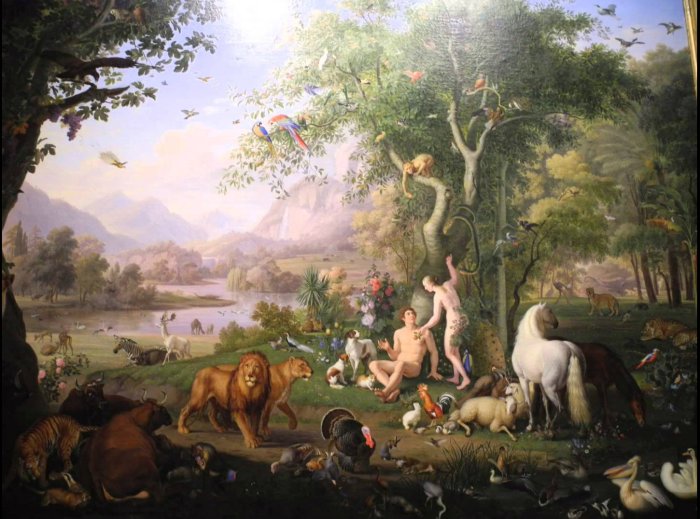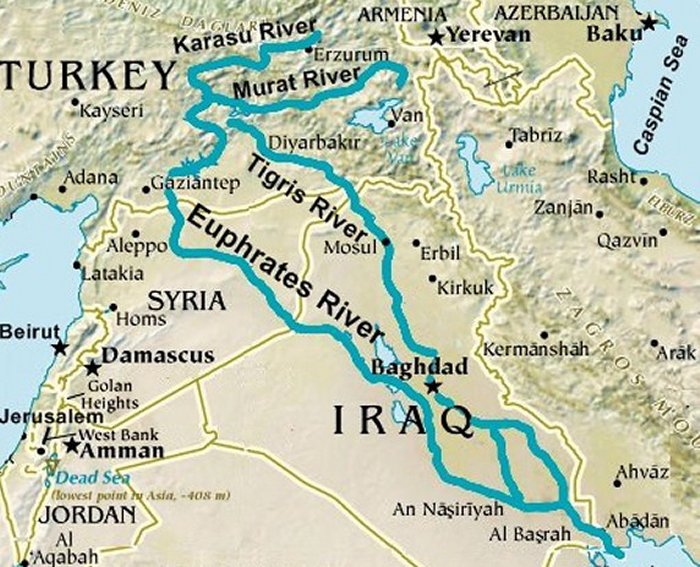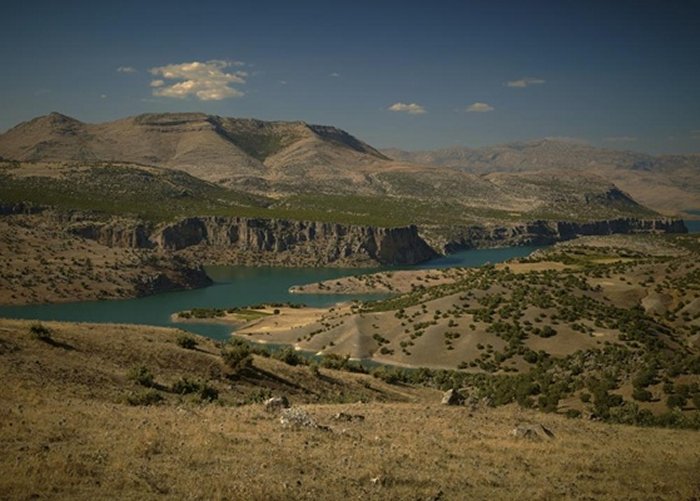Garden Of Eden And Its Four Rivers – Possible Locations Of Biblical Paradise Suggested By Archaeologists, Historians And Biblical Scholars
Ellen Lloyd - AncientPages.com - The Garden of Eden is one of many Biblical mysteries. If the legendary paradise existed, we would all like to know where it was located.
Many archaeologists and historians have searched for the Garden of Eden, and there have occasionally been reports this Biblical paradise, where Adam and Eve lived in harmony has been found. However, conclusive evidence is still missing.
The Bible does offer some clues, and archaeologists, historians, and Biblical scholars have suggested some possible locations.
Mysterious Four Rivers In The Garden Of Eden
In Genesis 2:10-14, it is written that a river in Eden was separated into four rivers.
10 A river watering the garden flowed from Eden; from there it was separated into four headwaters. 11 The name of the first is the Pishon; it winds through the entire land of Havilah, where there is gold. 12 (The gold of that land is good; aromatic resin[a] and onyx are also there.)13 The name of the second river is the Gihon; it winds through the entire land of Cush.[b] 14 The name of the third river is the Tigris; it runs along the east side of Ashur. And the fourth river is the Euphrates.
So, we have four rivers, Pishon, Gihon, Tigris, and Euphrates. We do know that the Tigris and Euphrates rivers form a major river system in Western Asia and they follow roughly parallel courses through the heart of the Middle East.
The fact that the Bible mentions Tigris and Euphrates makes many people think that the Garden of Eden was located in Mesopotamia, but there are two more rivers to consider and the problem is to identify them. Now, that’s when the controversy begins.
Pishon river is described as encircling "the entire land of Havilah", a place where there is gold and onyx. The second river is Gihon. We are told it flows around the whole land of Cush.
Where Are The Rivers Pishon and Gihon?
Many think, that Pishon and Gihon are the Nile and the Ganges.
Michael M. Homan at the Xavier University of Louisiana has suggested the land of Havilah was Nubia, a region located in what is today northern Sudan and southern Egypt. This would mean that the river Pishon was the Nile.
Nubia was home to some of Africa's earliest kingdoms and the land was known for rich deposits of gold. According to Homan, India, with river candidates being the Indus or Ganges, or Southwest Arabia, with the Pishon being the Wadi Bisha and the Wadi Baish. All three areas are famous for gold and other commodities.
Biblical scholar and archaeologist, William F. Albright (1891-1971), thought that Pishon and Gihon are what we refer to today as the Blue Nile and the White Nile, the two major tributaries of the Nile River. However, this theory creates a major problem. The Blue Nile and the White Nile are located far to the south of the so-called Fertile Crescent, while the Tigris and the Euphrates are located far to the north.
Titus Flavius Josephus, an early Jewish historian thought that Pishon is the Ganges and the land of Havilah is India.
According to Dr. Hugh Ross, an astronomer devoted Christian and author of the book Navigating Genesis: A Scientist's Journey through Genesis 1-11, “the mountains of Havilah are located in west-central Arabia, a region that contains gold, though the rest of the Middle East does not. Today we associate Cush with the horn of Africa.
However, during the end of the last ice age, the Red Sea was largely dry, which means the region of Cush would have extended into the mountains at the southwest tip of the present Arabian Peninsula.
Satellite imagery reveals the dry beds of two large rivers that once flowed from central and southern Arabia into the southwest region of the present Persian Gulf. Melting snow and ice on the mountains of Havilah and Cush at the end of the last ice age would have made the Pishon and Gihon as mighty as the Tigris and Euphrates.
Since most of the Persian Gulf was dry land at that time, the four rivers would have come together in what is now the southeastern portion of the Persian Gulf. From those “headwaters” the rivers would separate and continue to flow toward and empty into the Indian Ocean.”
Dr. Ross thinks that such a warm location “explains why Adam and Eve did not need clothes (Armenia, by contrast, would have been quite cold). Since a large aquifer exists under the Persian Gulf, it also explains the springs mentioned in Genesis 2:6.”
Is The Garden Of Eden Underwater?
Dr. Juris Zarins, of the Southwest Missouri State University, who has studied LANDSAT space images and has put forward a theory suggesting that the Garden of Eden is located under the waters of the Persian Gulf. He thinks that the story of Adam and Eve and their expulsion from paradise describes the shift from hunting-gathering to agriculture. In his opinion, this is an event that took place about 7,000 years ago as a result of climate changes that forced people to live in their homelands.
There are many theories about the location of the Garden of Eden, and several are intriguing, but the truth is that we still have no clues as to where the legendary paradise was located. Therefore, the Garden of Eden remains an unsolved biblical mystery.
Written by Ellen Lloyd – AncientPages.com
Copyright © AncientPages.com All rights reserved. This material may not be published, broadcast, rewritten or redistributed in whole or part without the express written permission of AncientPages.com
More From Ancient Pages
-
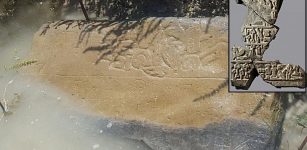 Lost City That May Have Defeated King Midas’ Kingdom Phrygia – Found Accidentally
Archaeology | Feb 23, 2020
Lost City That May Have Defeated King Midas’ Kingdom Phrygia – Found Accidentally
Archaeology | Feb 23, 2020 -
 Anqa: “Forgotten Twin” Of Dura-Europos Where Time Stood Still
Archaeology | May 9, 2024
Anqa: “Forgotten Twin” Of Dura-Europos Where Time Stood Still
Archaeology | May 9, 2024 -
 On This Day In History: Battle Of Langside Was Fought – On May 13, 1568
News | May 13, 2016
On This Day In History: Battle Of Langside Was Fought – On May 13, 1568
News | May 13, 2016 -
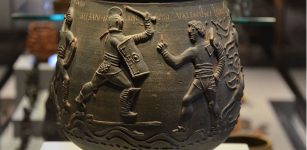 Colchester Vase Offers ‘Startling’ Evidence Of Gladiator Fights In Roman Britain
Archaeology | Mar 6, 2023
Colchester Vase Offers ‘Startling’ Evidence Of Gladiator Fights In Roman Britain
Archaeology | Mar 6, 2023 -
 Breakthrough! Evidence Of Previously Unknown Prehistoric Humans Who Lived In Europe More Than 1.1 Million Years Ago!
Evolution | Mar 13, 2025
Breakthrough! Evidence Of Previously Unknown Prehistoric Humans Who Lived In Europe More Than 1.1 Million Years Ago!
Evolution | Mar 13, 2025 -
 Why Is The History Of Striped Clothing Dark And Sinister?
Featured Stories | Feb 12, 2025
Why Is The History Of Striped Clothing Dark And Sinister?
Featured Stories | Feb 12, 2025 -
 Missing Pieces Of The Magnificent Golden Tree Of Lucignano Discovered
Archaeology | Nov 6, 2023
Missing Pieces Of The Magnificent Golden Tree Of Lucignano Discovered
Archaeology | Nov 6, 2023 -
 Drought Encouraged Attila’s Huns To Attack The Roman Empire – New Study
Archaeology | Dec 15, 2022
Drought Encouraged Attila’s Huns To Attack The Roman Empire – New Study
Archaeology | Dec 15, 2022 -
 Was Alulim, First King Of Sumer And Eridu Biblical Adam?
Featured Stories | Mar 14, 2019
Was Alulim, First King Of Sumer And Eridu Biblical Adam?
Featured Stories | Mar 14, 2019 -
 Enigmatic, Grand Neolithic Dolmen Roche-aux-Fées Built By Fairies And Steeped In Aura Of Love And Hope
Featured Stories | Jan 9, 2025
Enigmatic, Grand Neolithic Dolmen Roche-aux-Fées Built By Fairies And Steeped In Aura Of Love And Hope
Featured Stories | Jan 9, 2025 -
 What Happened To Drunken Women In Ancient Rome?
Featured Stories | Aug 30, 2023
What Happened To Drunken Women In Ancient Rome?
Featured Stories | Aug 30, 2023 -
 Rare Runic Inscriptions Engraved On Bone And Wood Discovered In Oslo, Norway
Archaeology | Feb 15, 2022
Rare Runic Inscriptions Engraved On Bone And Wood Discovered In Oslo, Norway
Archaeology | Feb 15, 2022 -
 Ancient DNA Pushes Herring Trade Back To The Viking Age
Archaeology | Oct 26, 2022
Ancient DNA Pushes Herring Trade Back To The Viking Age
Archaeology | Oct 26, 2022 -
 Fossil Bones From The Largest Penguin That Ever Lived Unearthed In New Zealand
Fossils | Feb 10, 2023
Fossil Bones From The Largest Penguin That Ever Lived Unearthed In New Zealand
Fossils | Feb 10, 2023 -
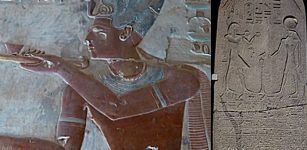 Egyptian King Seti I Documented His 3300-Year-Old Accomplishment On Triumphal Stele
Archaeology | Feb 27, 2023
Egyptian King Seti I Documented His 3300-Year-Old Accomplishment On Triumphal Stele
Archaeology | Feb 27, 2023 -
 Pyla-Koutsopetria: Complexity Of Ancient Fortifications Of Pyla-Vigla, Cyprus – Explored
Archaeology | Oct 15, 2019
Pyla-Koutsopetria: Complexity Of Ancient Fortifications Of Pyla-Vigla, Cyprus – Explored
Archaeology | Oct 15, 2019 -
 Interbreeding With Modern Humans Wiped Out Neanderthals’ Y Chromosomes 100,000 Years Ago
Archaeology | Sep 28, 2020
Interbreeding With Modern Humans Wiped Out Neanderthals’ Y Chromosomes 100,000 Years Ago
Archaeology | Sep 28, 2020 -
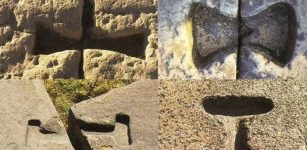 Mystery Of Ancient Metal Clamps – Advanced Lost Technology Modern Science Still Cannot Explain
Ancient Technology | Jul 31, 2020
Mystery Of Ancient Metal Clamps – Advanced Lost Technology Modern Science Still Cannot Explain
Ancient Technology | Jul 31, 2020 -
 DNA Of 10,000-Year-Old Luzio Solves The Mysterious Disappearance Of The Sambaqui Builders
Archaeology | Jul 31, 2023
DNA Of 10,000-Year-Old Luzio Solves The Mysterious Disappearance Of The Sambaqui Builders
Archaeology | Jul 31, 2023 -
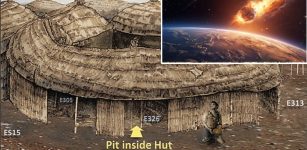 Cosmic Impact 12,800 Years Ago Forced Hunter-Gatherers In The Levant To Adopt Agricultural Practices
Archaeology | Oct 4, 2023
Cosmic Impact 12,800 Years Ago Forced Hunter-Gatherers In The Levant To Adopt Agricultural Practices
Archaeology | Oct 4, 2023

